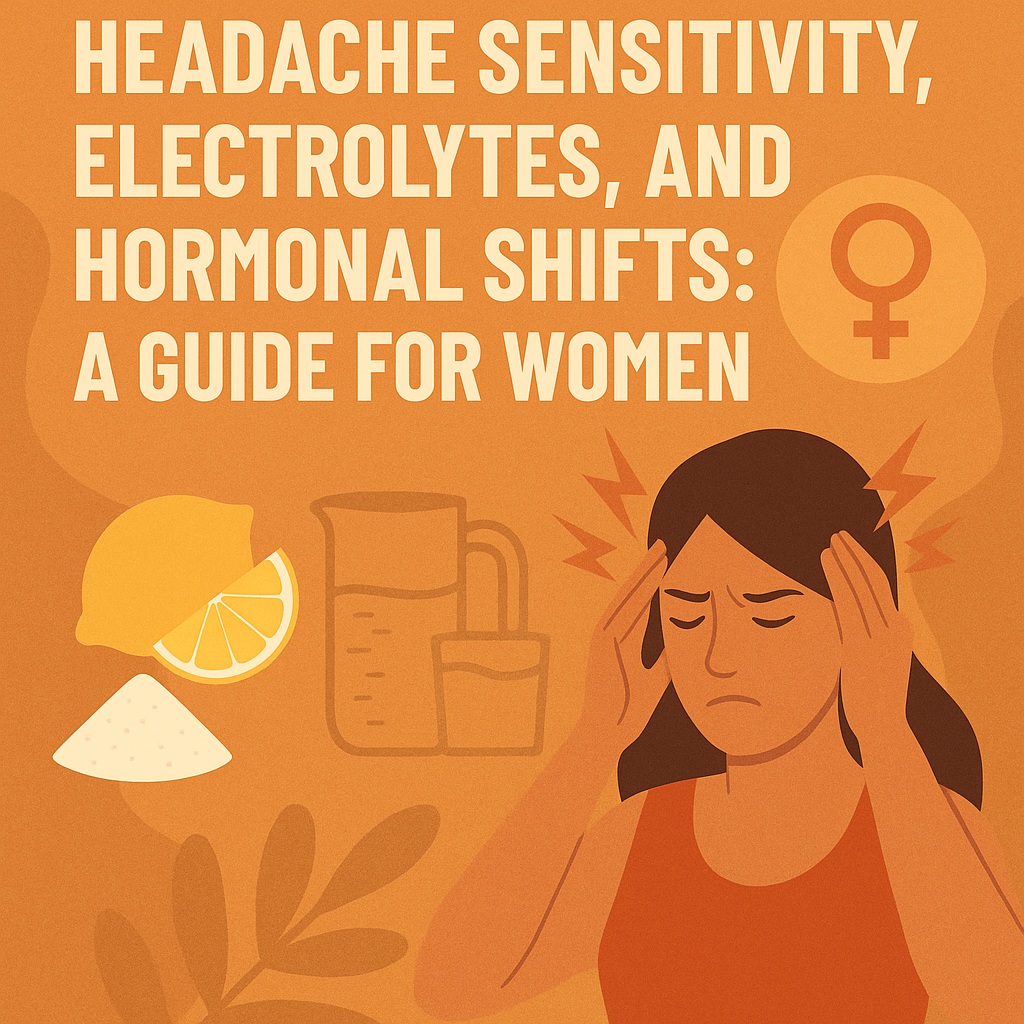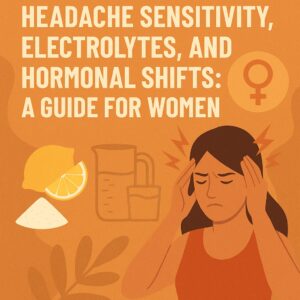Fasting with Headaches, Electrolytes, and Hormone Shifts: A Guide for Women
Fasting can be a powerful health tool, but women often have unique concerns — especially when it comes to hormone balance, migraines, and safe electrolyte use. If you’ve been fasting for a while and are ready to stretch into longer fasts, this guide will help you do so safely and strategically.
In this post, we’ll cover:
- Whether it’s safe to use lemon, salt, and boron in your fasting water
- How to prevent headaches (especially if you’re migraine-prone)
- How perimenopause affects fasting — and the best times to fast during your cycle
1. Can You Use Lemon, Celtic Salt, and Boron in Fasting Water?
Yes — with the right ratios and awareness, these additions can support your fast.
Lemon
Lemon water is often used for flavor and mild detox support. A squeeze of lemon adds trace potassium and polyphenols, but too much can:
- Trigger digestive movement in some people
- Break a strict fast due to small amounts of calories
Keep it to a few drops if you want to remain in a clean fasting state.
Celtic Salt (or Sea Salt)
Unrefined salt provides key electrolytes like sodium, magnesium, and trace minerals — essential during extended fasts to prevent fatigue, dizziness, and muscle cramps.
Use no more than 1/4 tsp per 500ml water unless directed otherwise. Avoid iodized table salt.
Celtic Sea Salt – Mineral-Rich Electrolyte Source
Boron
Boron is a trace mineral involved in bone strength, hormone regulation, and anti-inflammatory processes. Small doses (1–3 mg) may support estrogen metabolism and reduce menstrual-related discomfort.
It’s safe to add in small, food-grade quantities while fasting, but always check the label for fillers.
Boron Supplement – 3mg Trace Mineral
2. How to Prevent Headaches While Fasting
Headaches during fasting are usually triggered by one of the following:
- Electrolyte imbalance (especially low sodium or magnesium)
- Caffeine withdrawal (if cutting back suddenly)
- Low blood sugar (especially in early adaptation phases)
- Histamine spikes or detox reactions
Electrolytes: Your First Line of Defense
When fasting, insulin levels drop, and your kidneys excrete sodium and water more quickly. This flush causes many symptoms often blamed on “keto flu” or “fasting fatigue.”
Make sure you’re getting enough of:
- Sodium: 1/2 to 1 tsp unrefined salt daily (split doses)
- Magnesium: 200–400 mg (glycinate or citrate form)
- Potassium: from food during refeed, or trace sources in mineral water
Zero-Sugar Electrolyte Powder – Fasting Safe
Magnesium Glycinate – Gentle and Bioavailable
Caffeine Management
If you’re prone to migraines or childhood headaches, be cautious with coffee intake during fasting. Too much caffeine on an empty stomach can overstimulate the nervous system and spike cortisol.
Consider tapering caffeine or switching to half-caf, herbal teas, or decaf during fasting days.
Organic Decaf Coffee – Fasting Friendly
Other Headache Prevention Tips
- Stay well-hydrated with filtered water
- Try cold compresses or peppermint oil if a headache starts
- Break your fast with something gentle like bone broth if symptoms persist
Bone Broth Powder – Gut-Friendly Refeed Option
3. What’s the Best Time to Fast During Perimenopause?
Hormones shift dramatically during perimenopause. Cortisol sensitivity increases, progesterone may dip, and sleep can be disrupted. All of these factors affect how your body handles fasting.
Best Time to Fast:
Follicular Phase (Days 1–14): This is the first half of your cycle, starting from the first day of your period. Estrogen rises, cortisol sensitivity is lower, and the body handles fasting more gracefully.
More Caution Needed:
Luteal Phase (Days 15–28): As progesterone rises, the body is more sensitive to stress (including fasting). It’s often better to reduce fasting intensity here or increase nutrient-dense refeeding.
Cycle Tracking Journal – Sync Fasting to Hormones
General Perimenopause Fasting Tips:
- Stick to 12:12 or 14:10 fasting during sensitive weeks
- Use 16:8 or longer fasts during weeks of high energy and clear focus
- Prioritize protein during refeeding to support muscle and hormone health
Final Thoughts
If you’re fasting with a history of migraines, navigating hormonal shifts, or using enhanced hydration like lemon and boron — you’re not doing anything wrong. In fact, you’re engaging with fasting in a thoughtful, strategic way.
The key is to approach it as a long-term tool — one that adapts with your life stage, symptoms, and biofeedback. Use fasting to serve your health, not to punish your body.
Share this post with another woman navigating fasting and hormonal health.
And tag @TheResetRitual if you’re sharing your fasting experience or journey.
Disclaimer: This article is for informational purposes only and is not medical advice. Always consult with your healthcare provider before making changes to your diet, fasting routine, or supplements. This post may contain affiliate links. As an Amazon Associate, I earn from qualifying purchases.


